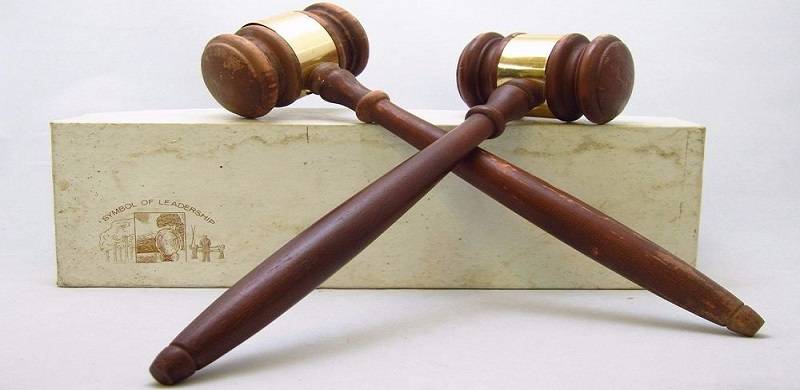
In the middle of March, as the world slowly awakened to the threat of the Coronavirus, the Lahore High court passed a 103-page judgment on section 15 of the ‘Financial Institutions Act 2001’. The concerned section empowered the banks to sell mortgaged property upon non-payment, provided the procedure provided in section 15 is followed.
This allowed banks to foreclose property without any intervention or permission from the banking courts. The case presented challenged the reintroduction of section 15 through the ‘Financial Institutions Amendment act 2016’ to allow for easier foreclosure of mortgaged property. The Lahore High Court in its judgment declared the aforementioned section as constitutional and allowed its existence as law.
This went against the judgment of the Supreme Court of Pakistan, which declared section 15 ultra vires in the case of ‘National Bank of Pakistan and 117 others vs SAF Textile Mills Limited’ cited as PLD 2014 SC 283 in which it was highlighted that the said section violated Article 10A which covers the fundamental right regarding a right to fair trial. Moreover the court declared that the banks cannot be given such arbitrary powers. And the court also stated that when the amount of mortgage or the amount to be given or financed has not been determined, then until it is so determined the court cannot give anybody power to sell the property of another person. The superior court brought forward that the banking courts are already skewed in favour of the petitioner due to the existence of section 9 and 10 of the ‘Financial Institution Ordinance 2001' which require the defendant to file a plea for defense where the defendant must explain as to why the case must require additional evidence for justice to be done - and more often than not, such leave is not granted, thus additional arbitrary powers cannot be granted in interest of Article 10A as well in the interest of natural justice.
The judgment of the Lahore High Court also went against article 189 of the constitution of Pakistan, which declares:
“Any decision of the Supreme Court shall, to the extent that it decides a question of law or is based upon or enunciates a principle of law, be binding on all other courts in Pakistan.”
This was highlighted during the proceedings of the case, but the Lahore High Court ignored such by stating that the fears of the Supreme Court were answered in the 2016 ordinance. That, of course, doesn’t absolve the Lahore High Court of the binding that Article 189 places upon all subordinate courts. Thus, the High Court, rather than criticizing or berating the state for going against the instructions of the Supreme Court to pass a law that they declared ultra vires, did the opposite. It could lend credence to the questionable action of the state without taking into cognizance that such an action was absolutely unnecessary - considering the existence of section 9 and 10 of the ‘Financial Instruments Act 2001’.
Unfortunately such a scene is very common in the field of law where one court states one thing whereas another court states the opposite. In fact, contradiction is common in judgments and leads to confusion among lawyers as well as judges. The same was found in Article 16 of the Qanun e Shahadat order 1984 which points to competency of an accomplice as a witness without corroboration. The Supreme Court in case PLD 1983 SCMR 1119 stated:
“The statement of an accomplice, without any independent corroboration is sufficient to the offence.”
However, at the same time three years later, the subordinate court passed a judgment in case 1986 CLC 753 which stated:
“Evidence of accomplice is unworthy of credit unless corroborated in material particulars.”
Another such example exists in dealing with ‘Justice of Peace’ in accordance to section 22A and 22B of the ‘Criminal Procedural code 1898 since in the famous case of ‘Khizer Hayat vs Inspector General of Police Lahore e.t.c’ PLD 2014 SC 753 the Superior Court declared it an executive power rather than judicial. This meant that any application dealing with the powers of a Justice of the Peace must be entertained and passed. However, this contradicts the real practice as well as the spirit of the 2 sections since justice of peace is not mechanical but applies judicial mind, gives bearing to facts and in many cases has summoned the opposite party and the respective police officials before passing relevant orders and this is covered in both procedural law, natural law as well in many precedents.
There exist many such examples in law and these contradictions impede the natural evolution of the legal system within the country.
The effect of such a judgment, as passed by the Lahore High Court, shall be that lawyers will present judgments from Supreme Court against the said judgment and file multiple suits against foreclosures - leading to increase in litigation, as well as a delay in justice for both parties. After all, previously, the process of obtaining a decree from banking courts, in most cases, was quick. The defendants were required by law to file a leave for defense, meaning that no defense would be accepted until the court is convinced that such defense is worthy of being placed on record. However, now such parties will create a defense citing the judgment from the Supreme Court, increasing delays in mortgage foreclosures.
It is time the courts of Pakistan, both superior and subordinate, work in tandem for each other, rather than against each other. In this way, the natural evolution of the legal system would not be impeded and the people of Pakistan could be provided quick and efficient justice without any legal loopholes to be exploited.
It goes without saying that lawyers, who are duty-bound as officials of court, must work to implement and increase justice in society rather than impede it in hope of personal gains and glory.
